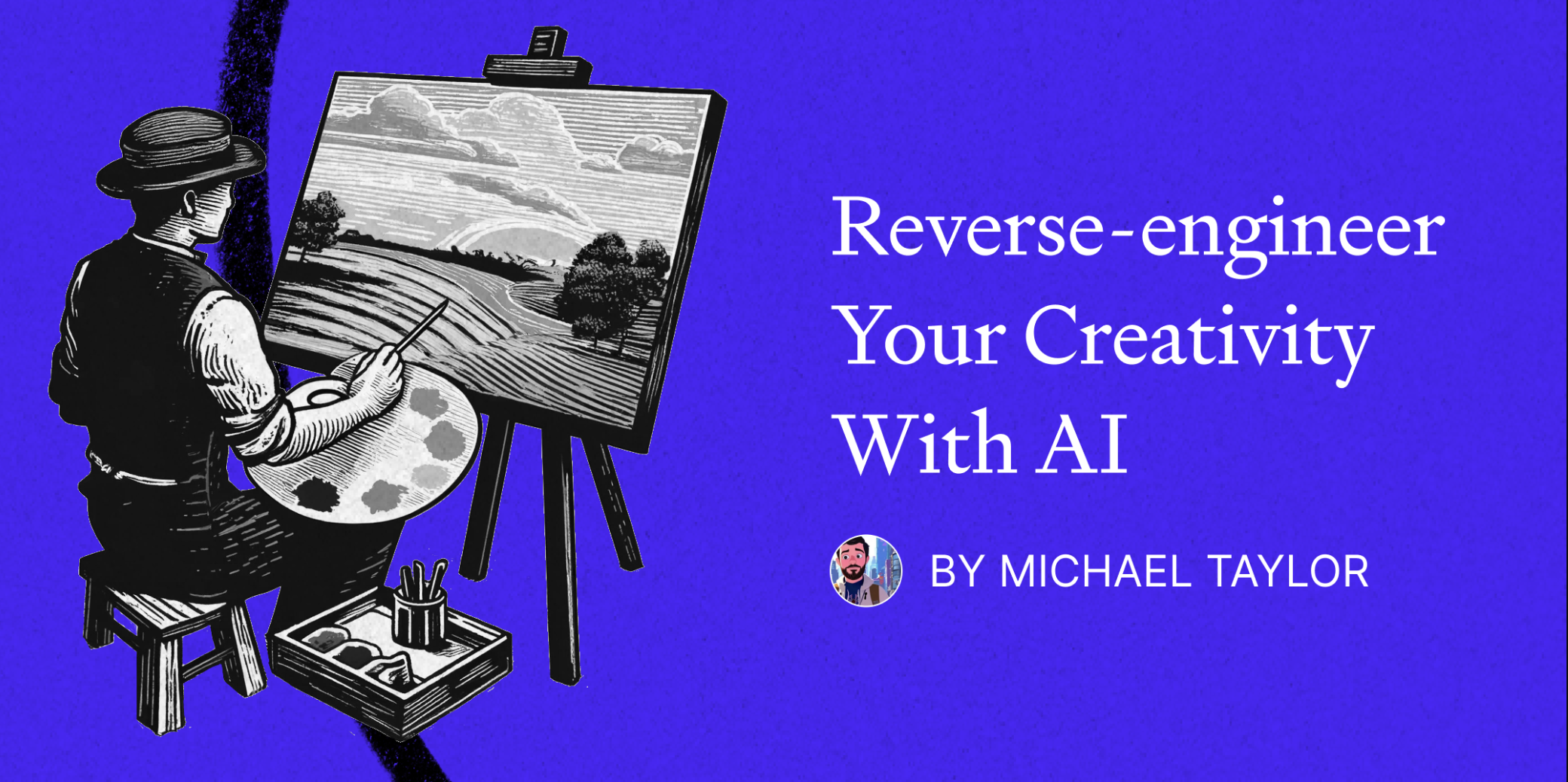Reverse-engineer Your Creativity With AI

🌈 Abstract
The article discusses how AI can help entrepreneurs make informed decisions about when to follow industry norms and when to differentiate their businesses. It explores the concept of "memetic analysis" - using AI to identify patterns and trends in the design and features of similar businesses, which can then inform strategic decisions about how to position a new business.
🙋 Q&A
[01] Walking into a Coffee Shop
1. What are some common design elements found in coffee shops across the world?
- Reclaimed wood furniture, hanging Edison bulbs, and minimalistic design choices
- Elaborately tattooed baristas and indie folk music playing in the background
2. Why do coffee shops tend to have these similar design elements?
- The internet has connected the world, allowing social media algorithms to propel winning design combinations globally, flattening culture
- Customers learn to look for these visual cues to signal whether they are in the "right" place
3. How can understanding these design patterns help entrepreneurs?
- Tapping into these design cues can remove some of the risk and uncertainty when starting a new business
- The key is knowing when to be similar and when to be different from customer expectations
[02] The Importance of Balancing Similarity and Differentiation
1. What data point highlights the difficulty of starting a successful new business?
- According to the U.S. Bureau of Labor Statistics, 90% of startups fail, a statistic that has remained consistent since the 1990s
2. How does past entrepreneurial experience impact the likelihood of success?
- Entrepreneurs who have started a successful business in the past are three times more likely to succeed the second time around
3. How can AI help compensate for a lack of entrepreneurial experience?
- AI can help summarize and analyze the lessons from others' success, finding the similarities that can be exploited
4. What is the key to finding the right balance between similarity and differentiation?
- The right balance could mean the difference between starting a beloved café and investing in a money pit
[03] Memetic Analysis
1. What is memetic analysis and how is it rooted in grounded theory?
- Memetic analysis is an iterative process of identifying similarities and differences between different samples, starting with inductive coding
- It involves deriving insights from the data collected, rather than relying on preconceived notions
2. How can AI, specifically ChatGPT's image recognition capabilities, help automate the memetic analysis process?
- ChatGPT can quickly process and label hundreds or thousands of images, identifying common design elements and patterns
- This saves a significant amount of time compared to manual review and coding
3. What are the key steps involved in using AI-powered memetic analysis?
- Scrape images of relevant businesses using a web scraping tool
- Use ChatGPT to generate labels and metadata for the images
- Analyze the frequency and distribution of the labels to identify popular and niche design elements
[04] Applying Memetic Analysis
1. How can memetic analysis help inform strategic decisions about product differentiation?
- By identifying common design elements and features, entrepreneurs can determine which ones to adopt and which ones to differentiate from
- Paying attention to less common or emerging design trends can reveal opportunities for meaningful differentiation
2. What is Hotelling's law and how does it explain the tendency for competitors to cluster together?
- Hotelling's law uses game theory to explain why competitors often move closer together over time, as it maximizes their collective market share
3. How can smaller players use differentiation as a strategy to compete with larger, more dominant players?
- Smaller businesses can differentiate by catering to specific niche preferences that larger players are unwilling or unable to address
- This allows them to occupy an ecological niche and avoid direct competition with the scale advantages of larger players
4. How can memetic analysis help identify emerging trends and "vibe shifts" in an industry?
- By tracking design elements and features that are gaining popularity, even if they are currently niche, entrepreneurs can spot opportunities to capitalize on emerging trends
- These "vibe shifts" occur as the mainstream becomes saturated, leading influential players to seek out something new
[05] Balancing Conformity and Innovation
1. What are the risks and benefits of conforming to industry norms versus differentiating?
- Conforming to industry norms is a safe strategy, but true innovation often requires going against the grain
- Successful differentiation involves identifying and catering to the unique preferences of a specific market segment, but it also carries the risk of decreasing the size of your target market
2. How can memetic analysis inform creative decisions and increase the odds of successful differentiation?
- By conducting memetic analysis and staying attuned to emerging trends and fringe interests, entrepreneurs can spot opportunities that others have missed
- While analysis cannot guarantee creative success, it can help make more informed decisions about when to follow the crowd and when to chart a new path